Raising butterflies in our classroom is always a highlight and this year was no different! We went hands-on all the way as we learned about the stages of the life cycle, metamorphosis, pollination, the compound eye and more. Read on to see all of our butterfly life cycle activities, experiments and the fun ways we integrated math! You’ll definitely want to try these high engagement butterfly life cycle activities when it’s time to raise butterflies in YOUR classroom!

Butterfly Life Cycle Activities
Waiting anxiously for our caterpillars to arrive, we read several informational books and started a KWL chart to write down any questions we had. Most students have some prior knowledge about the butterfly and its life cycle, but my students still had a lot of good questions.

With our books at the ready and our charts in place my class was very excited to get started! What was taking those caterpillars so long?

Butterfly Life Cycle Lessons
I use a teaching PowerPoint with vivid, real-life photos to teach lessons on metamorphosis, adaptations, pollination, the compound eye and more.
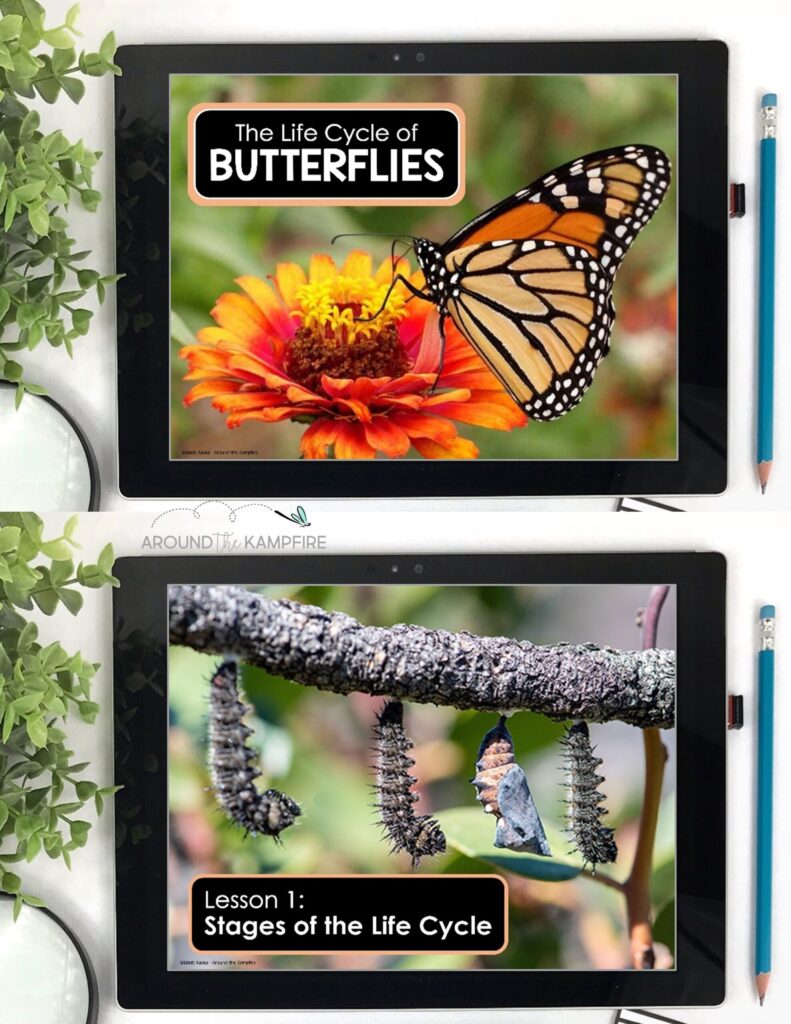
Click here to see the butterfly PowerPoint lessons.
Each lesson has embedded videos so students can see what they’re learning happening in real life.
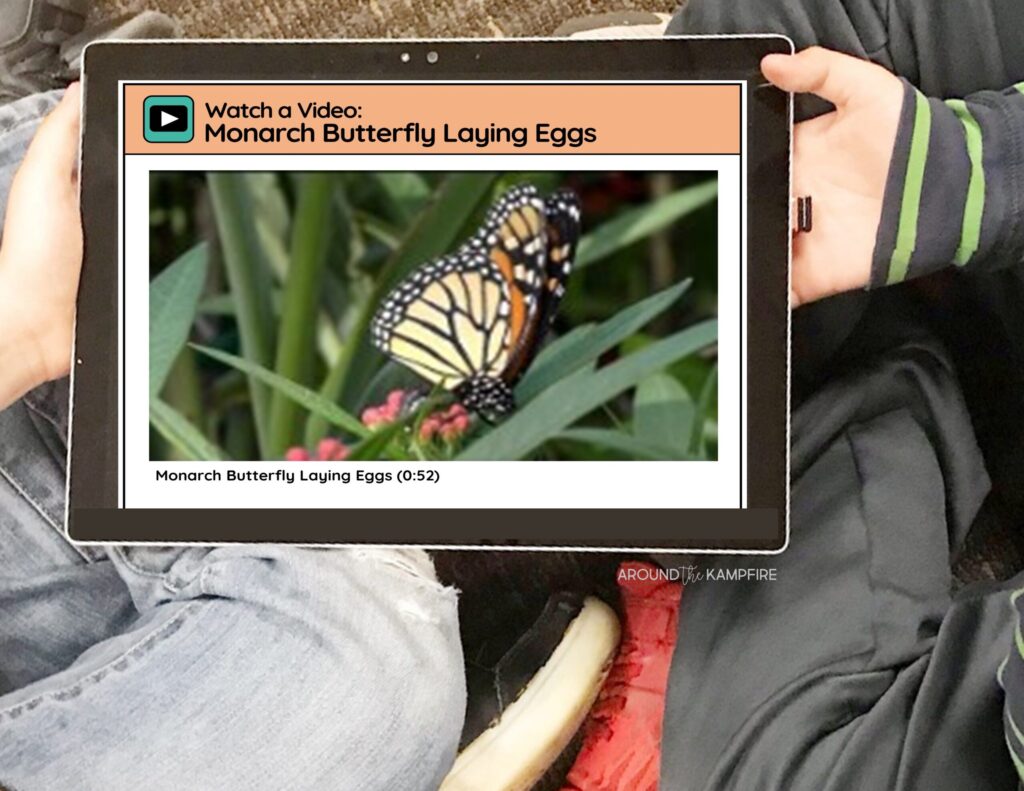
Students can also label parts of a caterpillar and butterfly with interactive diagram slides in the PowerPoint.

Observe the Changes
When our caterpillars finally arrived, the first thing we learned was how to handle them with care.
Each student received their own caterpillar and of course, they named them! Pure kid-heaven! I order a classroom butterfly set from Amazon with a coupon for a class set of caterpillars. Some years when they arrive the caterpillars are as small as a tiny thread and other years they are about 5 or 6 days away from forming a chrysalis. You never know what you’re going to get, so be ready!
To help observe the changes up close everyone got a hand lens. We used our butterfly life cycle journals to record dates and the changes we observed each day.
Students added the dates of significant changes in their caterpillars to a calendar.
Once the life cycle was complete and our last butterfly emerged from it’s chrysalis we compiled and discussed the data we recorded. I then placed everyone in groups with discussion cards. Students used their calendars to compare dates and data, discuss with their friends, and count the days between changes in the butterfly life cycle. We later graphed this data on 4 brightly colored graphs, but more on that in a minute!
Get students writing about science
Each piece of the booklet coincides with a mini-lesson and a writing activity. It’s a great way to get students writing about science as they explain what they are learning about the butterfly’s life cycle.
Another fun way to get kids writing is to make a butterfly life cycle on a string. Students write about each stage in the mini leaf booklets. All of the pieces tuck inside the large leaf pocket.
Explore Pollination with Mac & Cheese!

Try A Pollination Simulation
To my 2nd grade class, heaven on earth is wearing butterfly feet on your finger!
The bristles of the pipe cleaner represent the tiny hairs on an insect’s legs and feet. Perfect for holding pollen.
What to do with all the leftover macaroni?

Make commas of course! Use the leftover macaroni for students to practice using commas in a series. Add this easy activity to your literacy centers for students to practice reading skills using science content.
Click here to download this FREE Butterfly Facts commas in a series page.
Explore the Butterfly Compound Eye
Exploring the compound eye is always a hit! Students get a first hand look at how the compound eye is unable to change focus or see detail. Using kaleidoscopes to simulate an insect’s eye helps students to understand that an insect sees color and movement through thousands of lenses.
As we learned how a butterfly’s compound eye helps to protect them, my students explored this further in a learning lab. Students used toy kaleidoscopes (I purchased them on Amazon) to imagine life through an insect’s eyes and to compare a compound eye to a simple eye.
“Looking” through a butterfly’s compound eye is so much fun! Students get a first hand look at how the compound eye is unable to change focus or see detail. Using kaleidoscopes to simulate an insect’s eye helps students to understand that an insect sees color and movement through thousands of lenses. Their vision isn’t necessarily clear, but they can see the important things, like color to signal food and movement to signal danger or a predator may be near. Butterflies, and many insects, see the things that are important for their survival.
Incorporate Butterfly Math Activities
As we watched the life cycle progress, students added the dates of significant changes to a calendar. I then placed everyone in groups with discussion cards. Students used their calendars to compare dates and collect data, discuss with their friends, and document the days between changes in their caterpillars.
To integrate math into our butterfly unit, we did this teacher guided activity measuring how far a caterpillar crawls.
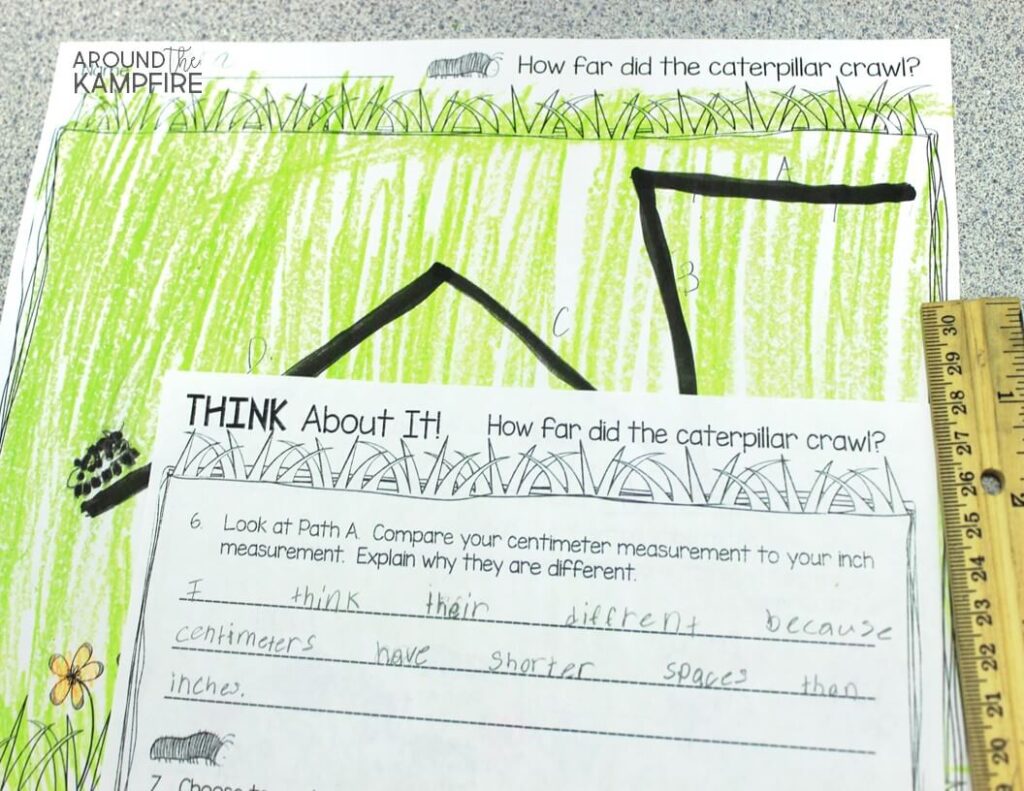
Students carefully placed their caterpillars on the page then marked the distance the caterpillar crawled before stopping. After a few stops and starts students measured and compared the lengths of the paths their caterpillars crawled.
Graphing the Butterfly Life Cycle
In addition to measuring and adding lengths, we also graphed the life cycle. Students used the calendars they kept to determine how long it took to reach each stage. These easy to prep butterfly graphs are so much fun and they give students a visual reference for comparing how long it took individual caterpillars to pass through each stage of the life cycle.
Read more about our butterfly graphing and see how students used their data to make bar graphs and line plots. (Be sure to download the FREE butterfly measurement activity there too!)
Butterfly Life Cycle Activities That Build Reading Skills
Being a butterfly is not all sunshine and nectar. Butterflies have their problems too. Match solutions to the problems that all butterflies face and assess your students’ knowledge at the same time!
As a way to fit it all in, we completed some of the writing, vocabulary mini books, and diagrams for our butterfly booklets during our literacy center time. Others parts we did after our learning labs or during our writing time.
Find all of these hands-on butterfly life cycle activities in a complete science unit for grades 1-3. The unit includes detailed, 2-week lesson plan with 9 engaging mini-lessons, butterfly science experiments, foldable butterfly booklet and so much more!
Click here to purchase the Butterfly Life Cycle science unit on TPT.
Click here to purchase the Butterfly LIfe Cycle science unit in my website shop!
Get FREE posters for your classroom
Add your personal email below (because most schools block outside emails with attachments) and I’ll send you this free Butterfly Life Cycle Poster Pack!

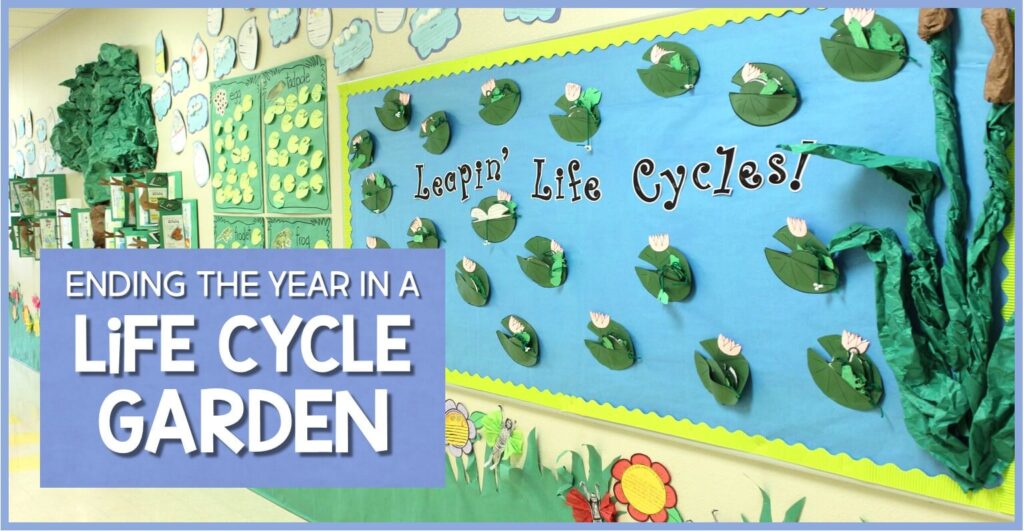

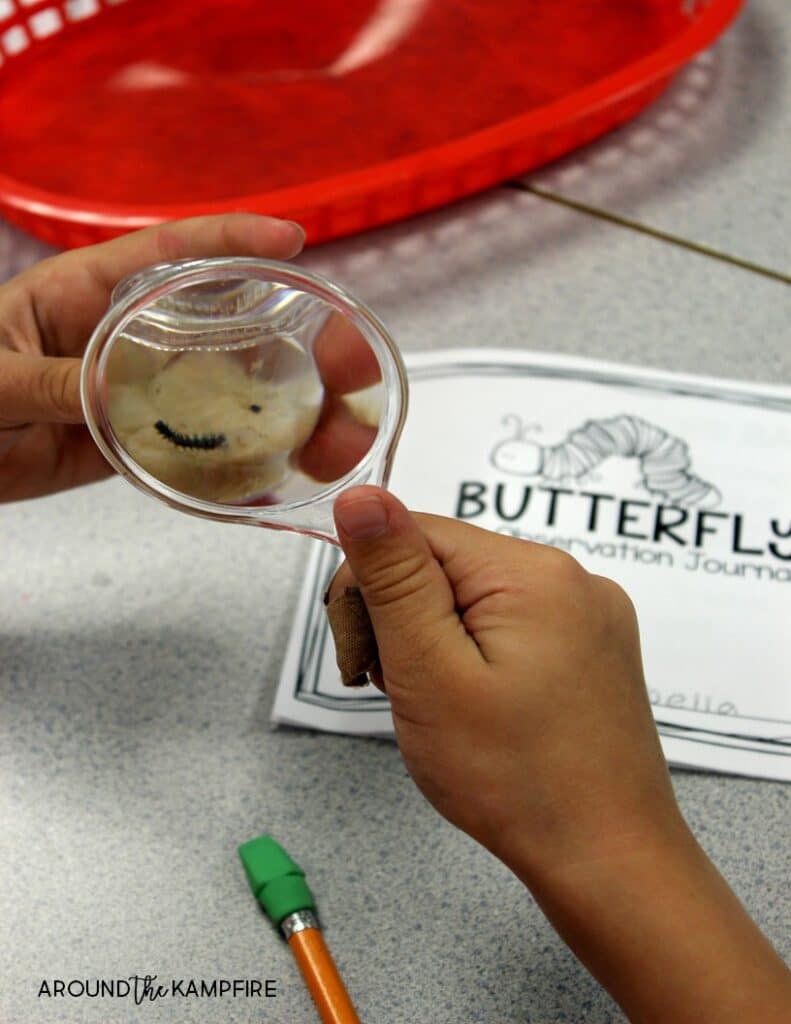
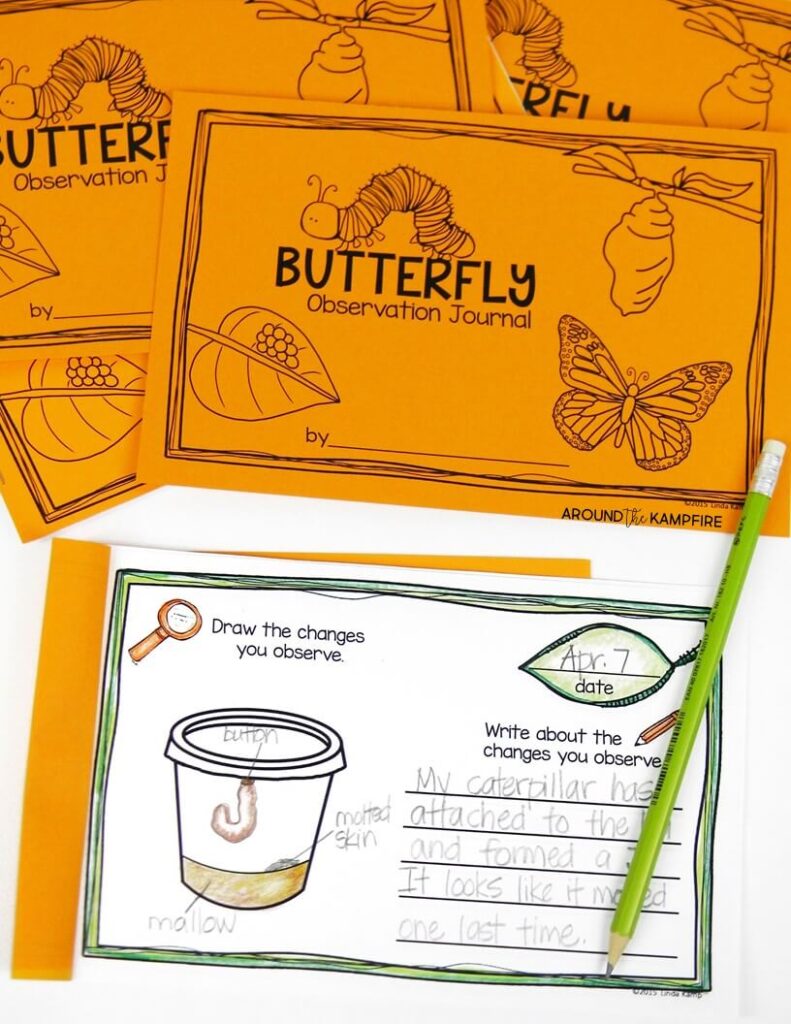
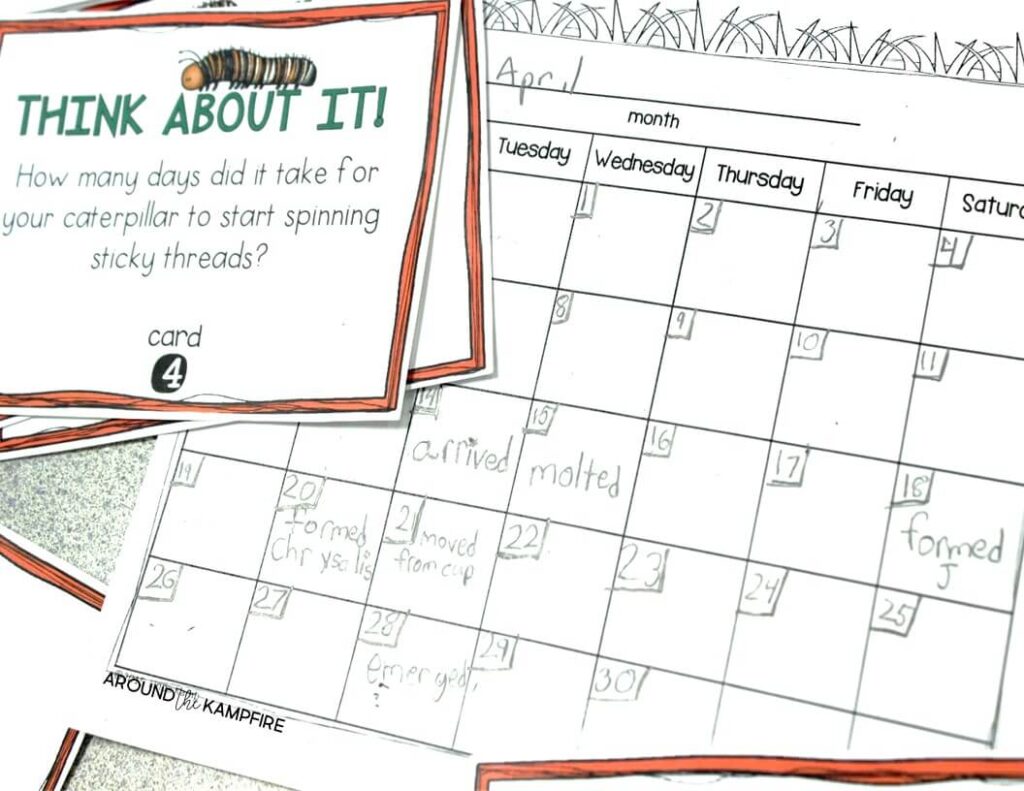



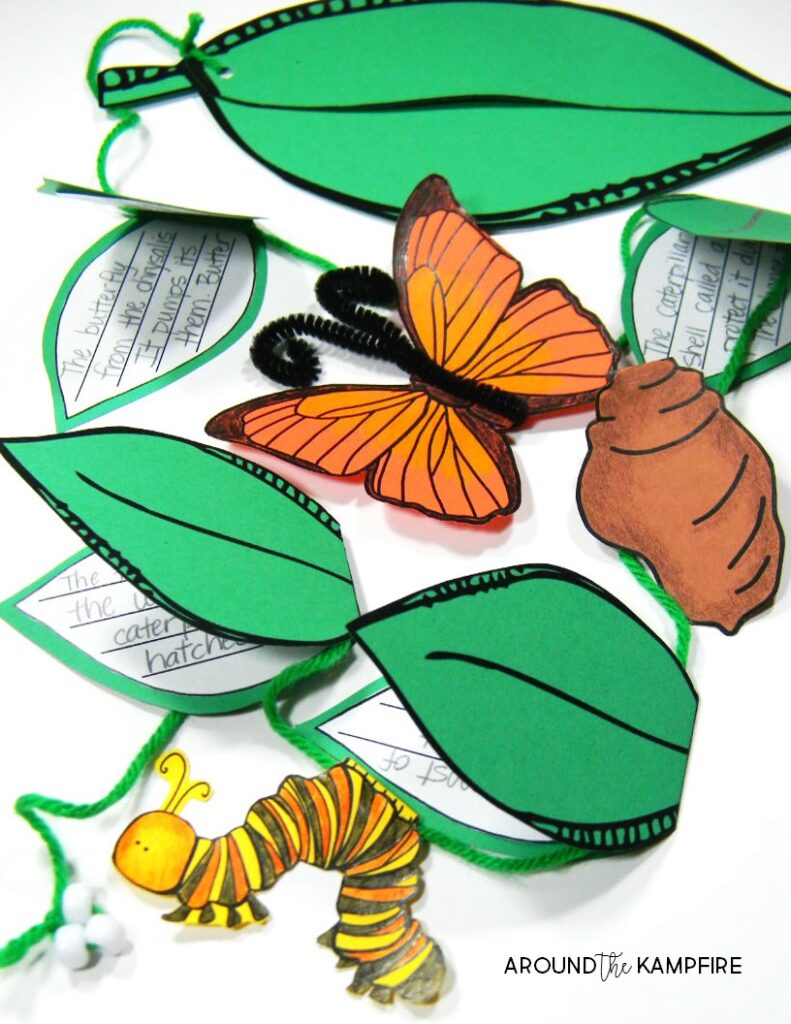



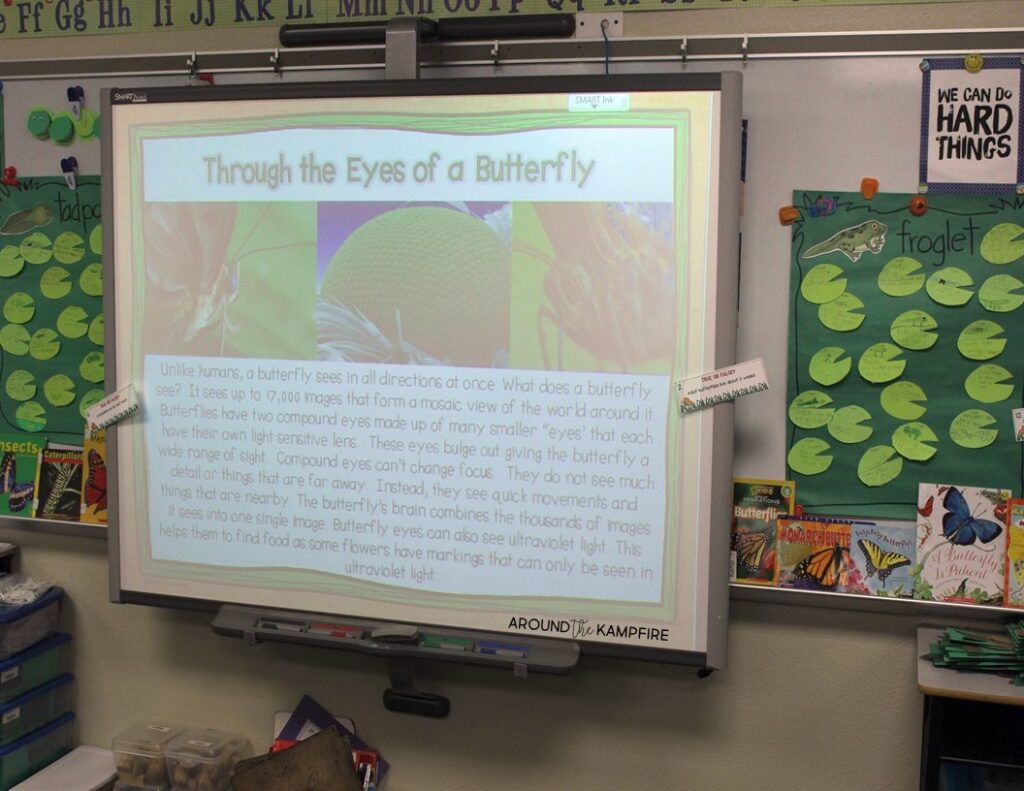
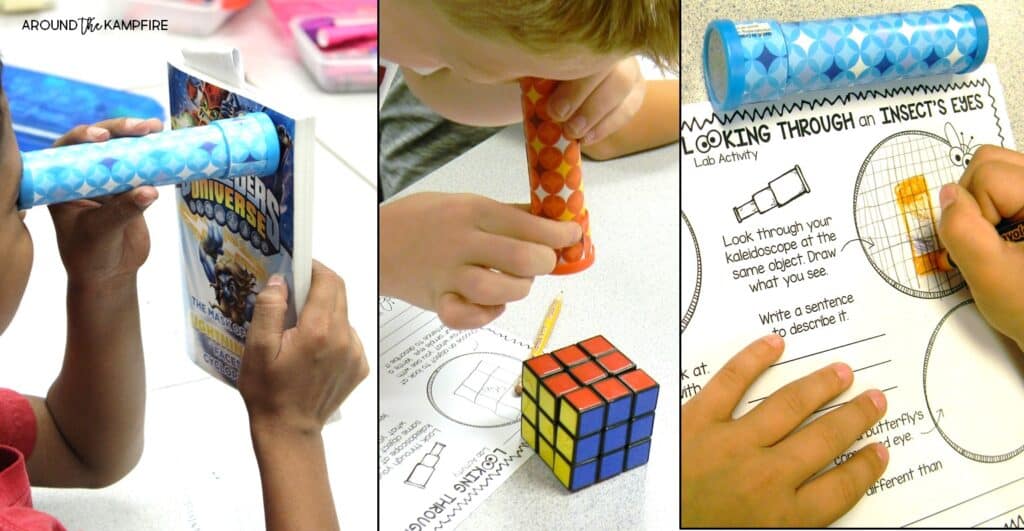
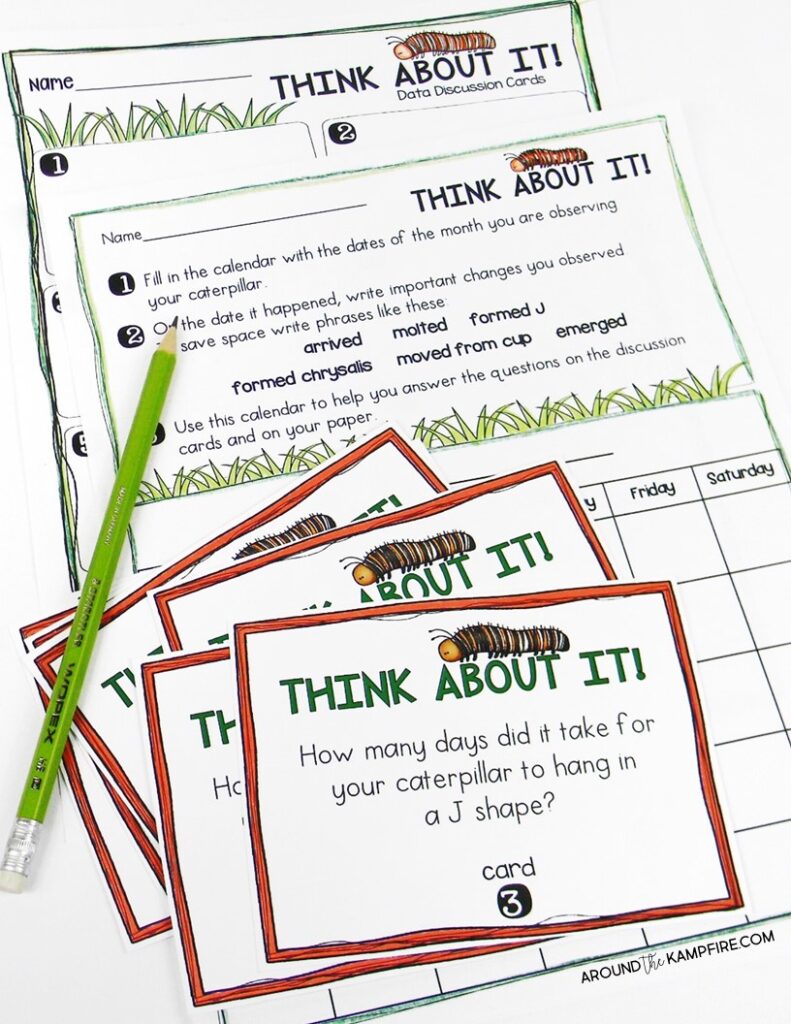

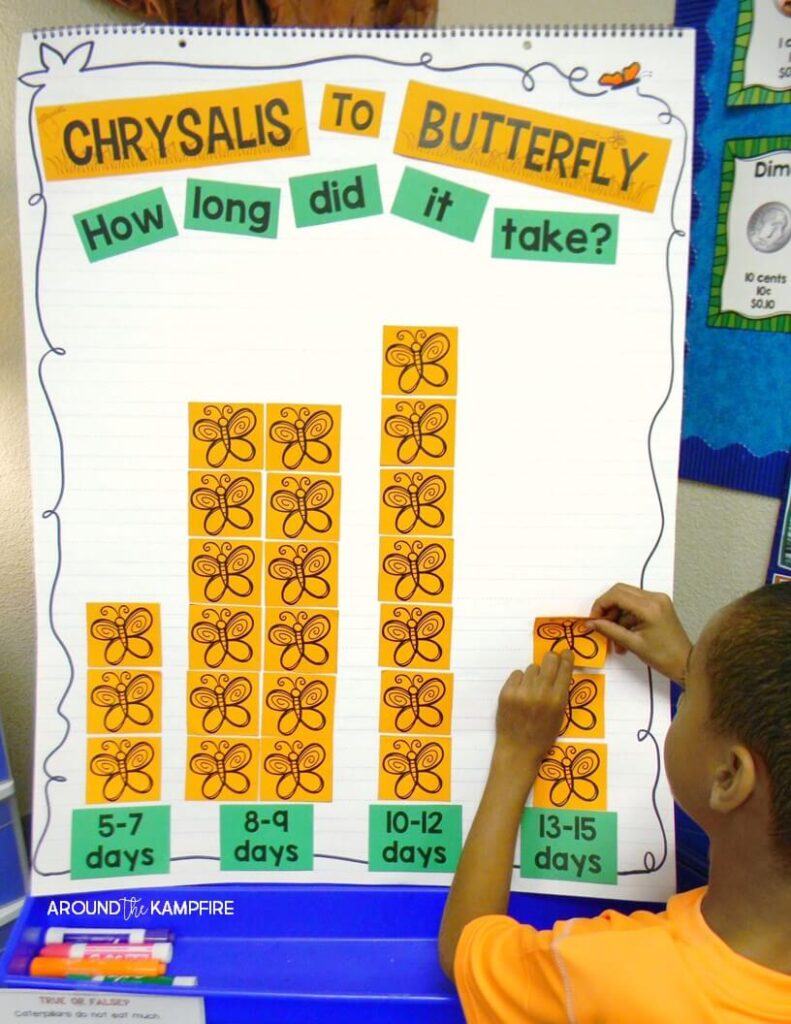
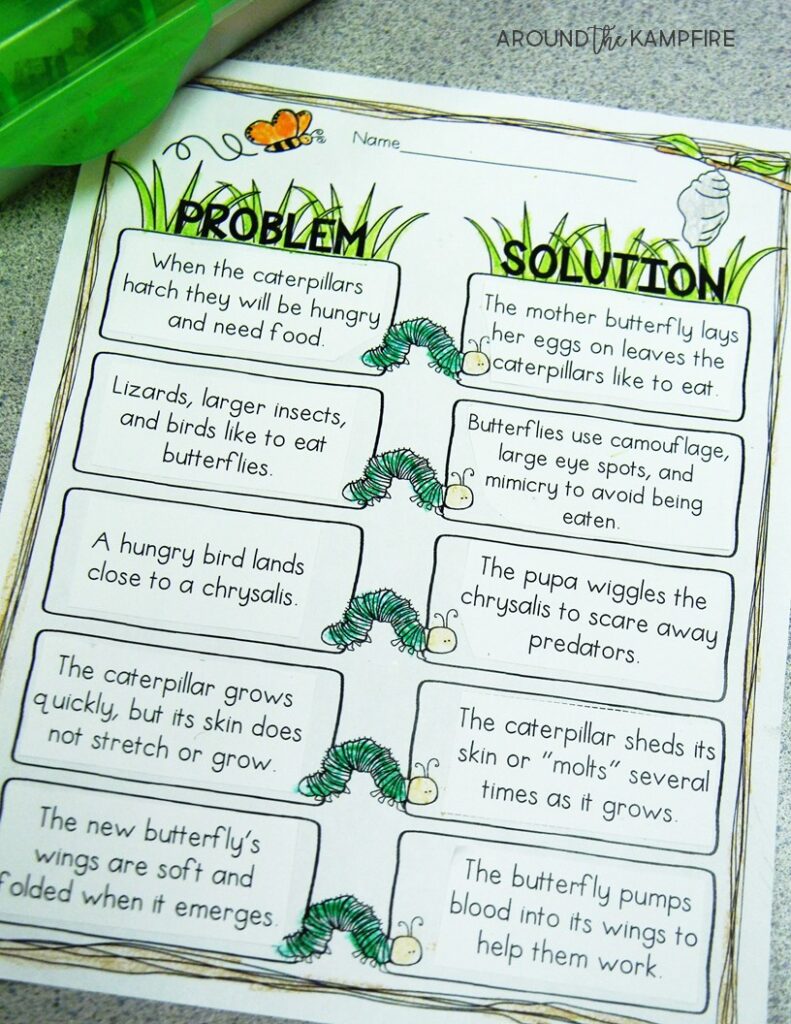








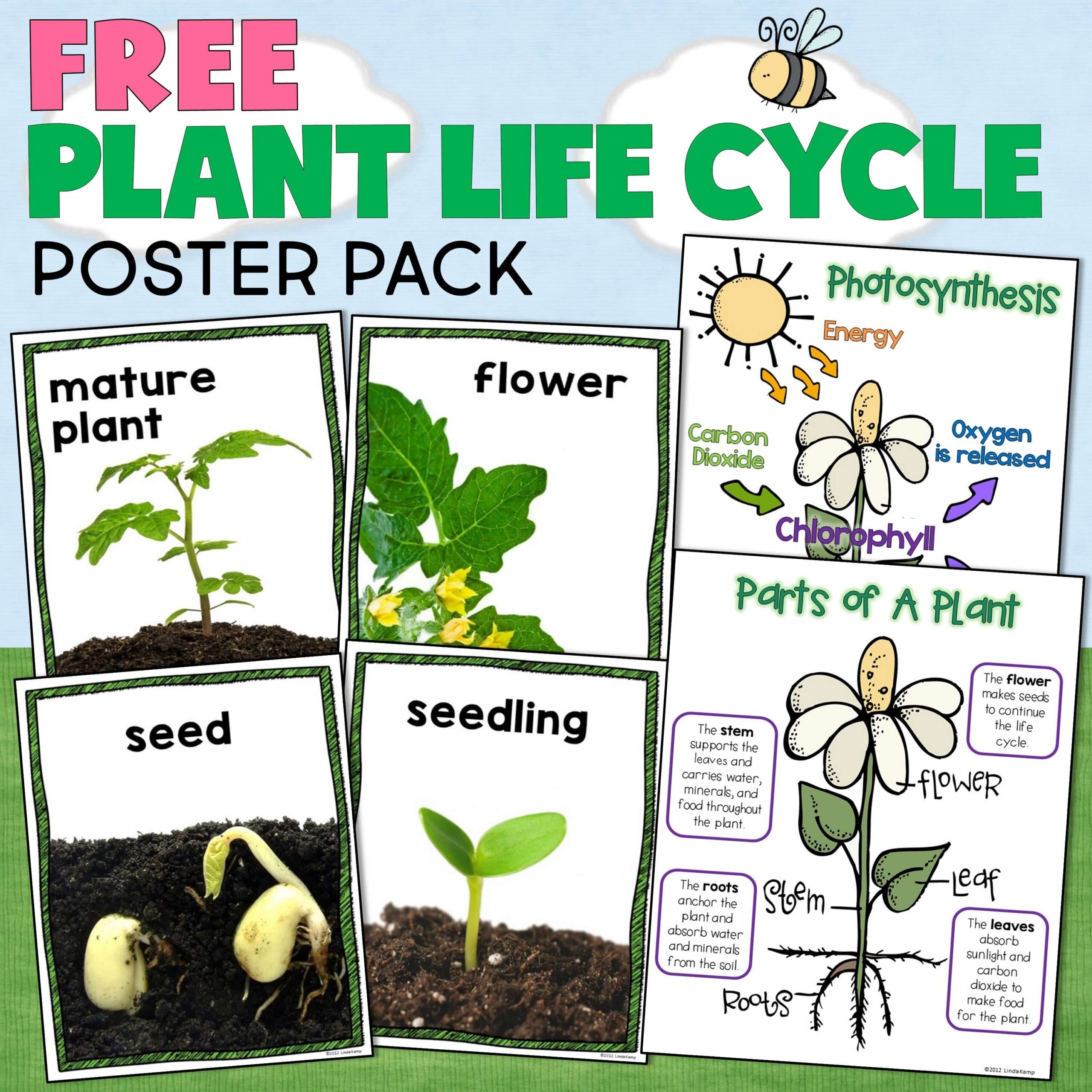
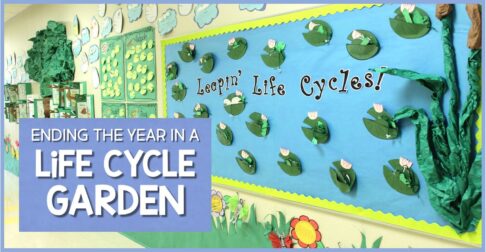



I’m so happy right now! I run a refugee education program. This summer I wanted all my students to develop a strong knowledge of butterflies so that we could do a lot of high-quality writing. I was planning to create materials myself but these are better than I would have done. I am SO grateful.
Thanks for sharing these awesome ideas! I can’t wait to incorporate some into our butterfly studies!!!
Now I wish I was still teaching!! i retired after 40 years in the classroom but love your projects SO MUCH!!!!! Thanks for sharing your creative and innovative ideas!!!!!
A great unit!! Thank you for all your hard work!
Can the butterfly unit be done without the caterpillars? Could I use just the videos and sheets you have in the unit?
You’re so welcome! I hope the unit is helpful for you! Yes, the unit can be done without caterpillars and raising butterflies. You would skip the observation journals and one of the math activities. None of the other activities require that you are raising butterflies.
I love the wonderful posters and the great information. Thank you so very much.
This is great!
Please send me free poster pack
Thank you for sharing with us this knowledge. Greatly appreciate it.
Can’t wait to see the butterfly life cycle posters! Thank you in advance 🙂
I would love to have the poster pack for my preschoolers! Unfortunately the other projects are too advanced for my children, but I loved them! Thank you!
This is an amazing unit! I’m looking at using the ideas during our Tier time since our whole-group reading is pretty stacked on time. How long did it take you to complete the entire unit? Where did you get the butterflies?
I’m so glad you like the unit, Whitney! It’s definitely one of our highlights each year.
I usually spend about 2 weeks on the unit. You can order class sets of caterpillars from InsectLore.com.
Hi Kelly,
Did you fill in the form in this post? That will send you the posters. If you did not receive the email be sure to check your spam and all other folders.
Love the pollination activity! Where did you get your flowers? Do you have a pattern?
Thank you!
Hi Molly!
The pollination lab and all of the templates are part of the butterfly life cycle science unit that is featured in the post. You can find it here: https://www.teacherspayteachers.com/Product/Butterfly-Life-Cycle-Complete-Science-Unit-1808862.
Thanks so much for stopping by and for asking!
Linda
Absolutely love your ideas! I’m planning a butterfly S.T.E.A.M. time and was hoping to get the life cycle printable pictures. I’ve tried searching many ways, but no luck. Can you figure out what I’m doing wrong?
Hi Maryanne,
Thank you! I’m so glad you like the ideas in the post! You can get the free poster pack by subscribing to our newsletter in the form at the bottom of this post. Once you subscribe you will be sent an email with a link to download the posters. Be sure to check your spam folder and any other folders for the email.
Good luck with your S.T.E.A.M project and thanks so much for asking!
Linda
What did you use for the powder on the butterfly pollination?
Hi Cassidy,
We used mac and cheese powder for the pollen. Thanks so much for stopping by and for asking!
where did you get your caterpillars?
Hi Krystin,
We order our caterpillars from Insect Lore online.
What did you use for the pollen with the pipe cleaners? If you would, email me.
Hi Allie, We used macaroni and cheese powder then used the leftover macaroni has commas in the freebie in the post. Unfortunately you didn’t leave your email address so I hope you find your answer here. Thanks so much for stopping by!
wonder if popcorn salt would work??
^^agreed! fabulous Linda!
Hands down, the BEST butterfly unit I've ever seen. I have a bunch of butterfly units now, and your's outdoes them all 🙂
Thank you so much Maribel! I’m so glad it has what you need and hope your class enjoys it!